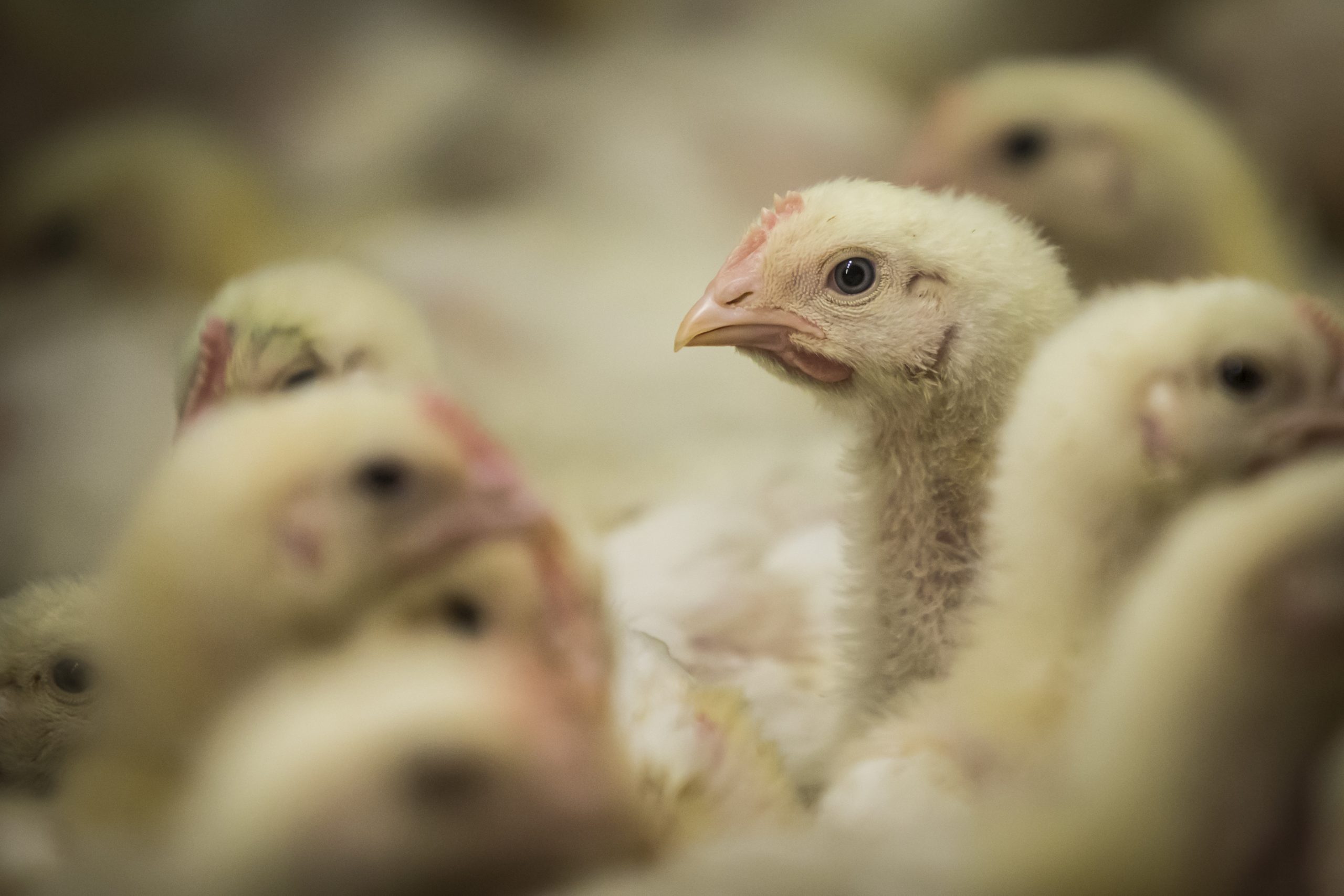Protecting broiler chicken from fusariotoxins

In spite of all the precautions taken in feed mills to reduce the contamination of feed, poultry are very often exposed to mycotoxins. Special care must be taken for fusariotoxins because of their high occurrence and deleterious effects, even at low doses.
The most frequent type of mould developing on plants in the field is Fusarium, responsible for fusariosis. Fusarium itself is not a high threat to the animals, but under stressful conditions, it produces harmful mycotoxins like:
- trichothecenes (mainly deoxynivalenol (DON) and T-2/HT-2),
- zearalenone (ZEA)
- fumonisins (FUM)
In the field, one of the most important sub-acute effects of mycotoxins (mainly trichothecenes and fumonisins) is their impact on feed conversion ratio and growth due to lower nutrient absorption (with or without feed intake reduction). The losses in performance, the increased incidence of diseases and the reduced reproductive performance are of great economic impact in the field. In spite of all the precautions taken in feed mills to reduce the contamination of feed, poultry are very often exposed to mycotoxins. The last resort is therefore to work on reducing the effects of mycotoxins thanks to specific feed additives. Many solutions are available on the market, but very few of them have a wide spectrum action that really allows the reduction in the effects of fusariotoxins.
3 mycotoxins tested in broilers
A study was conducted by the Samitec Institute of Analytical Microbiological and technological solutions (Brazil) in May 2016 in order to measure the effect of 3 mycotoxins (fumonisin, T-2/HT-2 toxins and aflatoxin) on broilers health and performance and to evaluate the efficacy of a mycotoxin binder* to mitigate the effects of these mycotoxins.
There were 960 male broiler chickens (Cobb 500) that were allocated to 11 treatments, and mycotoxins were tested individually from day 0 to day 21. The birds received an iso-nutritive diet formulated according to NRC 1994 recommendations and were fed ad libitum, following Samitec standard protocol. The level of mycotoxin used in this trial was set up to obtain significant effects under experimental conditions with mono-contamination, which explains the high levels of mycotoxin that were used: 2.8 ppm of aflatoxin, 100 ppm of fumonisin and 2 ppm if T-2/HT-2.
The results show that for all mycotoxins tested, a significant reduction of feed intake and body weight was observed and the mycotoxin binder always made it possible to significantly (P≤0.05) improve the birds feed consumption (Figure 1) and thus the final body weight (Figure 2). The trial also evaluated the impact of mycotoxins on biological parameters and the efficacy of the mycotoxin binder to alleviate these effects. Mycotoxins are very hepatotoxic toxins as they provoke congestion of the hepatic sinusoids, focal haemorrhages, centrilobular fatty cytoplasmic vacuolation and/or necrosis, biliary hyperplasia, and nodular lymphoid infiltration (Leeson et al., 1995) that is often characterised by pale and enlarged liver. The relative liver weight is a very good criterion of mycotoxin hepatotoxicity (Tessari et al., 2006; Kubena et al., 1997). For each tested mycotoxin, the relative weight of the liver was altered compared to the control, whereas the mycotoxin binder always permitted to significantly improve the relative liver weight at day 21 compared to the mycotoxin group.
Effect on Sa:So ratio
Fumonisins have a specific hepatotoxicity, as they are structurally similar to sphingoid bases sphinganine (Sa) and sphingosine (So), and have been identified as potent inhibitors of sphinganine N-acyltransferase (ceramide synthase, Wang et al., 1991). Fumonisins alter the enzyme secretion in the liver and lead to a rapid accumulation of sphinganine in this organ. Consequently, the sphinganine to sphingosine ratio (Sa:So) evolves and makes a good marker of fumonisins intoxication. There is increasing evidence for the involvement of sphingolipids in regulating various cellular functions, such as cell-cell interactions, cellular protein and receptor functions, membrane transport, and signal transduction (Merrill et al., 2001).
In this Samitec trial, the Sa:So ratio was 7.7 times higher for broilers exposed to 100 ppm of fumonisin than the negative control (P≤0.05). Meanwhile, the inclusion of the mycotoxin binder in the diet containing 100 ppm of fumonisin significantly diminished the Sa:So compared to birds exposed to 100 ppm of fumonisin (P≤0.05) (Figure 3). According to the evaluated parameters of this experimental trial, the deleterious effects caused by very high levels of mycotoxins can be alleviate thanks to the addition of the mycotoxin binder.
Figure 4 – Improvement of Feed conversion ratio (FCR) with mycotoxin binder.

Further testing under field conditions
Complementary to the above experimental trial with high levels of mycotoxins, a field trial was conducted in 5 Brazilian farms in order to obtain a representative view of the mycotoxin binder potential under field conditions, with naturally occurring levels of mycotoxins.
In each farm, 2 flocks of the same age were compared from day 1 to day 45 (slaughtering). All the animals received the same balanced diet, supplemented with different product to mitigate mycotoxin risk at (0.5kg/ton of feed). The starter feed was naturally contaminated with 850 ppb of fumonisin B1 and the grower feed with 1150 ppb of fumonisin B1. On average, broilers within mycotoxin binder group presented a higher ADG (+4%), a lower FCR (-4%) and higher liveability (+1%) than the control group, leading to an improved Production Efficiency Factor** by 10% (Figure 4). In addition to the improved performance, the mycotoxin binder also helped to reduce the use of veterinary products by 6%. The overall improvements obtained with the mycotoxin binder allowed to increase the return over feed cost by 36% compared to the control group (using a competitor product), in a context of fumonisin contamination.

Mycotoxins can have a huge effect on the health and productivity of livestock – check out this informative feature.
*MT.X+ **Production Efficiency Factor. PEF = ADG*(liveability/(FCR*10)). Local regulations should be consulted concerning the status of this product in the country of destination. All information only for export outside Europe.











